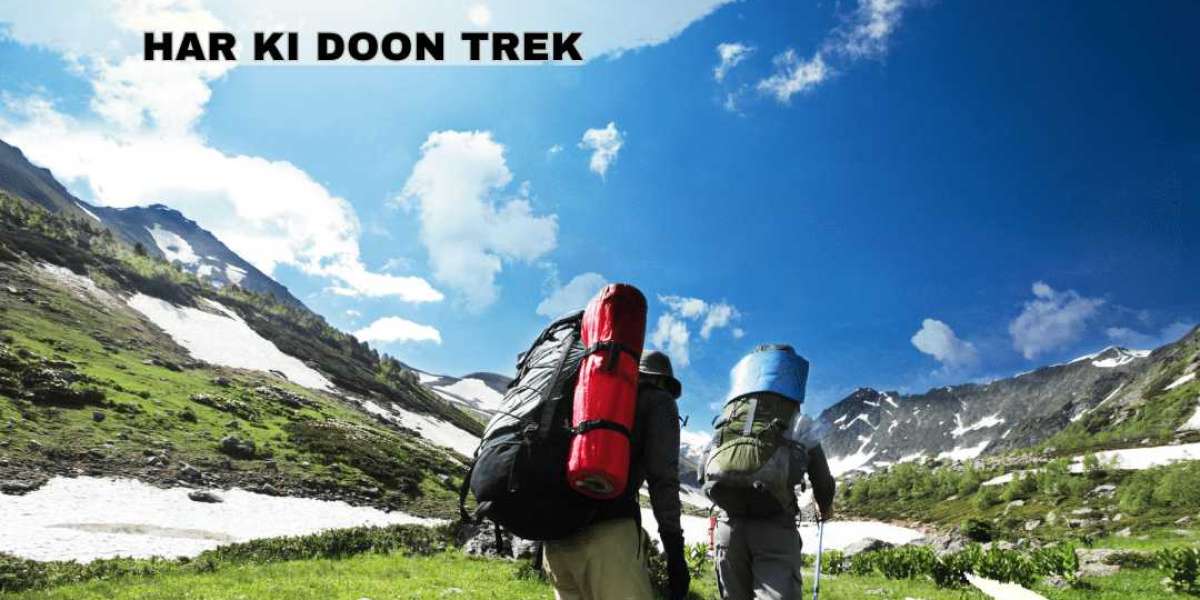Har Ki Dun is a stunning valley located in the Garhwal Himalayas of Uttarakhand, India. It is situated at an elevation of approximately 3,566 meters (11,700 feet) above sea level. The name "Har Ki Dun" translates to "Valley of Gods," which reflects the valley's spiritual significance and its natural beauty. Here's a detailed description:
Geographic Location
Har Ki Dun is nestled in the Govind Wildlife Sanctuary and National Park, surrounded by the majestic peaks of the Garhwal Himalayas. The valley is accessible through a trek that starts from the small village of Sankri, located at the base of the mountains.
Trekking Route
The trek to Har Ki Dun is approximately 44 kilometers (27 miles) round trip and typically takes around 6-7 days to complete. The trail passes through lush green meadows, dense forests of pine and deodar, and picturesque villages such as Taluka, Osla, and Gangad. These villages are known for their unique wooden architecture and rich cultural heritage.
Flora and Fauna
Har Ki Dun is a paradise for nature lovers and wildlife enthusiasts. The valley is home to a diverse range of flora and fauna. The forests are abundant with oak, pine, and rhododendron trees. The region is also known for its vibrant alpine flowers during the summer months. Wildlife in the area includes species like the Himalayan black bear, musk deer, langurs, and a variety of birds, making it a great spot for bird watching.
Scenic Beauty
The valley offers breathtaking views of snow-capped peaks, including Swargarohini (6,252 meters), Bandarpoonch (6,316 meters), and Black Peak (6,387 meters). The Har Ki Dun river flows through the valley, adding to its scenic charm. The serene environment and the panoramic views of the surrounding mountains make it a perfect destination for trekkers and nature enthusiasts.
Mythological Significance
Har Ki Dun holds a significant place in Hindu mythology. It is believed that the Pandavas from the Mahabharata took this route on their way to heaven. The valley is also associated with Lord Shiva and is considered a sacred place by the locals.
Best Time to Visit
Har Ki Dun is best visited in the months of April through June and September through November. During these periods, the weather is pleasant, and the trails are free from heavy snow, making it ideal for trekking. In winter, the valley is covered in snow, offering a completely different but equally mesmerizing experience for those who enjoy winter treks.
Cultural Experience
The trek to Har Ki Dun also provides an opportunity to interact with the local communities, primarily the people of the Garhwali tribe. Visitors can learn about their traditional lifestyle, customs, and agricultural practices. The villages en route have charming wooden houses and temples, adding to the cultural richness of the trek.
Adventure and Activities
Apart from trekking, Har Ki Dun is also popular for other adventure activities such as camping, bird watching, and photography. The valley's pristine beauty and tranquil environment make it an ideal spot for meditation and yoga retreats.
Preparation and Safety
Trekking to Har Ki Dun requires a moderate level of fitness. It is advisable to be well-prepared with appropriate trekking gear, including sturdy boots, warm clothing, and essential supplies. Since the trail passes through remote areas, it is also important to carry sufficient food, water, and medical supplies. Hiring a local guide or joining an organized trekking group is recommended for safety and a more enriching experience.
In summary, Har Ki Dun is a mesmerizing destination that offers a blend of natural beauty, adventure, cultural richness, and spiritual tranquility. It is a perfect retreat for trekkers, nature lovers, and anyone seeking an escape into the pristine wilderness of the Himalayas.






